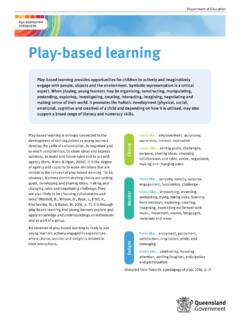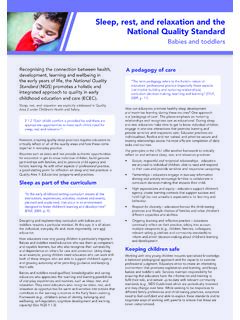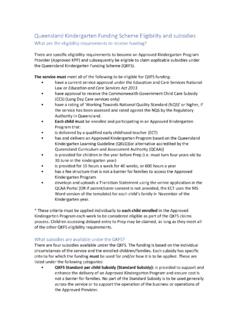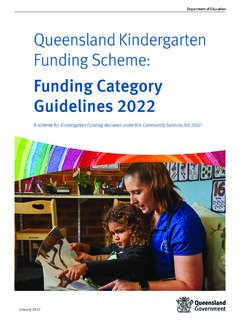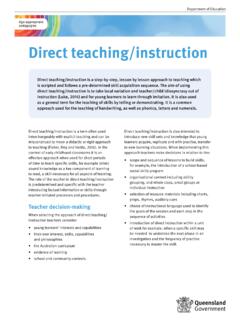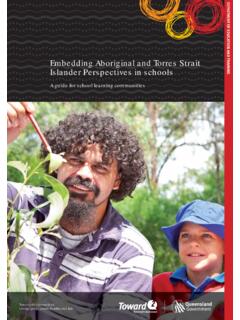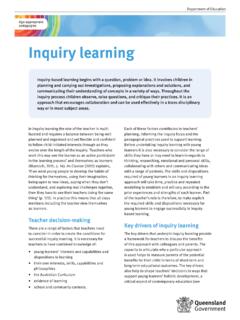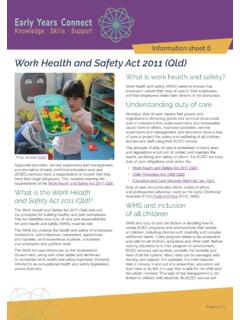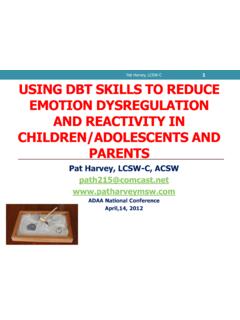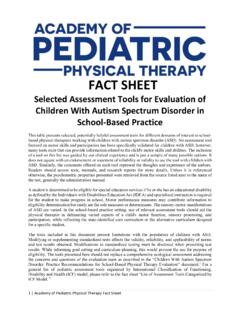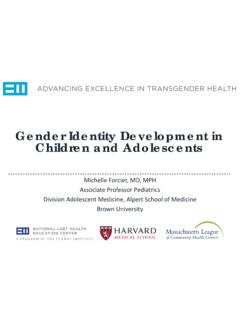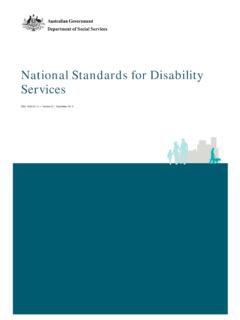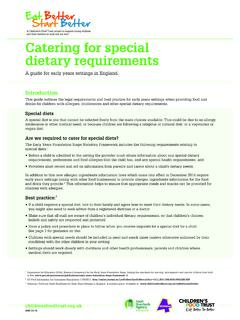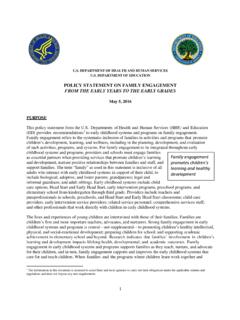Transcription of Meeting children’s sleep, rest, and relaxation needs
1 Meeting children s sleep , rest , and relaxation needs Babies and toddlers in ECECS upporting sleep , rest , and relaxation in babies and toddlersSleep is essential for baby and toddler growth and learning. As with all areas of development, there are large differences in children s need for sleep , rest , and relaxation . children of the same age can have quite different sleep patterns and sleep needs . For example, there is wide variation in the number, timing and duration of naps between individual children across their first three years of life.
2 The sleep needs of a child may also change from day to day ( if a child did not have enough sleep the night before, or if they are unwell). This means that there will often be a large range of needs and preferences within any one the first 12 months, when there is a risk of sudden unexpected death in infancy (SUDI), including sudden infant death syndrome (SIDS), a key concern is to ensure that sleep environments are safe. This requires attention to the baby s sleep positioning, the sleep environment, and supervision. Maintaining regular sleep patterns supports healthy development and learning for all babies and toddlers.
3 Consideration of ways to support a sufficient amount and regularity of sleep for children in early childhood education and care (ECEC) services is important. Central to this goal is working in partnership with parents through ongoing two-way communication about sleep and rest needs . To support the development of healthy life-time sleep practices, educators need to work with children and families to provide appropriate opportunities to meet each child s need for sleep , rest , and use a range of practices to manage sleep , rest , and relaxation needs .
4 The approach that a service uses will be influenced by many factors including the age and characteristics of the children , the needs of families and the community, and the physical environment space and layout. In thinking about sleep , rest , and relaxation practices, consider the 5 principles of NeedIdentify and respond to each child s and GrowthUse sleep , rest and relaxation as opportunities for a safe, predictable and supportive flexible in your partnerships to support sleep regularity and in Early ChildhoodRESEARCH GROUPThe sleep program is funded by the Queensland Government Department of Education and TrainingEELPSIn planning provisions for sleep , rest , and relaxation consider.
5 When sleep times are provided and if these are flexible enough to cater for individual children s sleep needs . How to respond to changes and variations in a child s sleep , rest and relaxation planning provisions for sleep , rest , and relaxation consider: Ways to identify sleep cues in different children , such as eye rubbing, increased irritability, or withdrawal from activities. How to respond appropriately to children s sleep cues. Ways to support children s learning in the context of sleep , rest and planning provisions for sleep , rest , and relaxation consider: How to ensure practices align with current safe sleeping guidelines.
6 How to establish routines that are calm, predictable and familiar for planning provisions for sleep , rest , and relaxation consider: How to respond to children who need sleep at varying times of the day and of different durations. How to adjust sleep practices to meet the diverse needs of different planning provisions for sleep , rest , and relaxation consider: Different strategies that could be used to support regular two-way communication with families. How to respond to differences in beliefs and practices between educators and families.
7 How to discuss with parents when a particular approach may not be appropriate or possible within your service. When implementing sleep , rest , and relaxation practices for babies and toddlers, consider the five principles of : sleep Need Consider when opportunities for sleep , rest , and relaxation are provided, and ways to identify and respond to each child s change in children s sleep development occurs in the first 3 years of life. During this time children gradually transition from having multiple sleeps throughout the day with more frequent night waking, through to having most of their sleep at night.
8 During this period the number and regularity of naps decreases. By age three many children will be sleeping on some days and not others, and about half will have ceased regular napping completely. The speed and timing of this transition differs greatly from child to child. Learning and growth Support children s learning and physical growth by being responsive to children s sleep is critical for learning and growth. If opportunities to sleep do not match a child s need this will impact on his or her alertness, ability to learn, and the quality of social interactions.
9 Being responsive to children s sleep cues ensures that opportunities for sleep are provided at the right time for each child and can also provide opportunities to help children to learn the importance of listening to our bodies .Partnerships Build partnerships with families to ensure regularity and consistency. Families hold different expectations about sleep that reflect parent beliefs, cultural norms, and work patterns. children may also be cared for in settings other than an ECEC service or their home ( by their grandparents).
10 Regularity and consistency of sleep is important for young children . To ensure that sleep practices and timing are consistent with those at home and other care settings, ongoing communication with families is essential. It is also important to recognise that sometimes parent requests may not be consistent with safe or responsive practice, or be feasible within the group-based Provide sleep environments that are safe, predictable, and supportive of children s sleep , rest , and relaxation . children have difficulty sleeping in environments where they do not feel safe or where routines are unpredictable.
